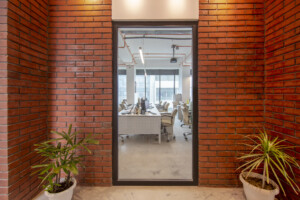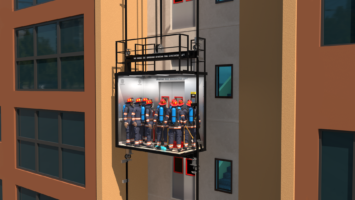
By Gopikrishnan TM, Director of Sales & Marketing (India, Middle East, Asia & Oceania), Vetrotech Saint-Gobain
Fire safety is paramount, given its significant impact on human life and property. According to statistics from the National Fire Protection Association (NFPA), fires result in thousands of fatalities and billions of dollars in property damage worldwide each year. Beyond the immediate physical harm, fires can also lead to long-term economic and social repercussions, disrupting communities and straining emergency response resources.
Fire-rated glass partitions exemplify the vital role of testing in enhancing building safety. These walls serve as functional and aesthetic components in commercial spaces, subjected to rigorous evaluation in accredited fire testing laboratories. These tests include integrity assessments and fire resistance testing, thus making sure the partitions can resist high temperatures and successfully confine smoke and flames. Moreover, regular factory audits validate production processes, ensuring consistency and adherence to strict fire protection standards. Building owners can improve overall fire safety and protect people and property in an emergency by investing in tested and audited fire-rated glass partitions.
Today, architects, engineers, and building owners are prioritizing the development of robust passive fire protection systems. These systems consist of various components, including fire-rated walls, doors, glazing systems, and smoke barriers, each playing a crucial role in containing fires and enabling safe evacuation procedures.
However, their effectiveness relies on rigorous testing and quality assurance. Accredited fire testing validates these products, ensuring they meet strict performance benchmarks established by national and international standard-setting organizations, like EN 1363, BS 476, ISO 834, ASTM 119, and UL. Through a series of standardized tests conducted in specialized laboratories, these products undergo rigorous evaluations under simulated fire conditions. Only products meeting prescribed standards receive certifications, providing assurance of their effectiveness in real-world fire incidents. Fire is a serious business and hence the testing and evaluation of the products that are determined to compartmentalize fire should also dealt the same way. It is not enough to fire test a product, it is necessary to fire test a product in a nationally or internationally accredited, compliant lab as per ISO/IEC 17025, which follows and adheres to the rules, regulations and boundary conditions determined in the standard to which the product is being tested. End user shall not be deprived from using the compliant fire protection products due to lack of compliance of the laboratories.
PRODUCT CERTIFICATION
A product certification is a conformity assessment procedure that provides a sense of assurance, much more than just a test report. What is the independent correlation between a test report and the product being offered or installed? An accredited Certification Body (CB), also commonly referred to as Conformity Assessment Body (CAB), verifies factory quality control, selects the sample to be tested, confirms the detailed description of the product, witnesses the testing, visits the manufacturer for periodic audits, issues a certificate and the right to use its ‘mark’, and ‘lists’ the product online. This procedure of product certification and manufacturer certification ensures that the product is compliant, performs as intended and meets the necessary testing and classification standards through enforcing production quality on the manufacturer. The most indispensable aspect of this certification is the Factory Product control (FPC) which verifies that the manufacturer at the factory is practicing repeatability in producing the products that can constantly deliver results to meet the relevant classification and standards.
FACTORY PRODUCT CONTROL
Research from the National Institute of Standards and Technology (NIST) highlights the critical role of factory audits in maintaining the repeatability and quality of fire protection products[
]. Factory audits, conducted by accredited third-party certification bodies like NABL, UKAS, and IAS, provide ongoing scrutiny of production processes to ensure adherence to rigorous standards. This not only validates the initial test results but also safeguards against variations in product quality over time. Investing in factory audits and accredited fire testing is not only necessary to comply with regulations, but also highly recommended. Architects, developers, and building owners rely on the performance guarantee offered by recognized testing and certification procedures.
The industry must continue to prioritize fire safety in building design and construction. This entails making constant investments in R&D and testing techniques to meet new challenges and evolving regulations. By encouraging cooperation and knowledge exchange across stakeholders, we can all work together to improve building safety and resilience against fire hazards safeguarding lives and property in the long run.
About the author: Gopikrishnan TM is the Director of Sales & Marketing (India, Middle East, Asia & Oceania) at Vetrotech Saint-Gobain. He has been involved from the start of the Vetrotech Saint-Gobain business in this region since 2008. He is focussed on market creation, expansion, and strategic direction across India, the Middle East, and the Asia-Oceania regions, achieving significant milestones in enhancing Vetrotech Saint-Gobain’s presence and profitability.





Leave a Reply